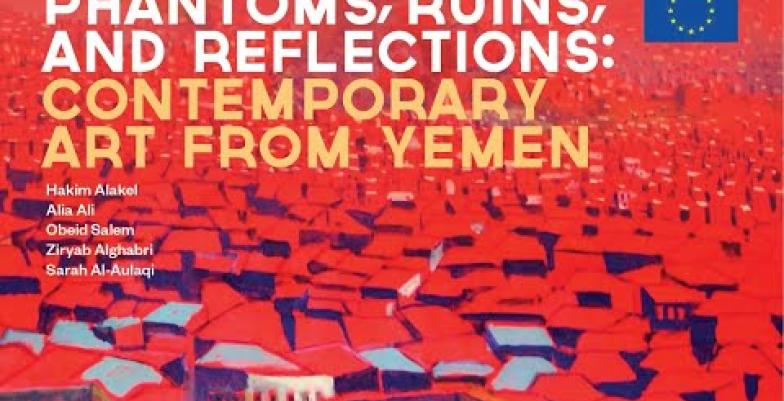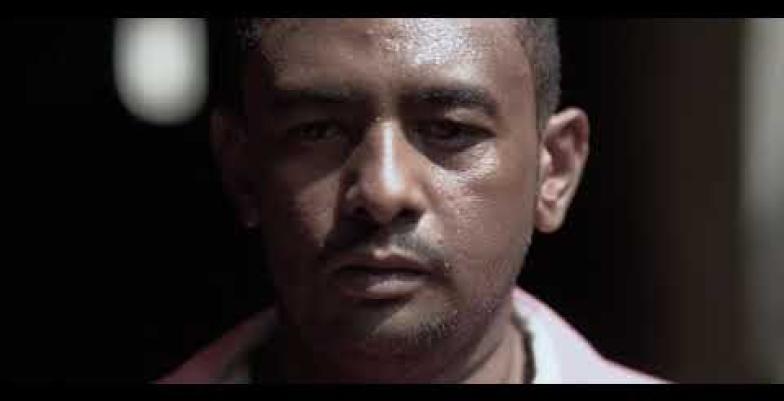INTRO
The idea behind the communication campaign We need to talk about Yemen is simple: in the past five years, Yemen and Yemenis have seldom received the international attention they deserve. They have rarely had the chance of telling their own stories, of talking about their personal struggles, resilience or talents. For far too long, Yemen has been a crisis we didn't hear much about, a forgotten conflict. By launching this campaign, we want to try to address this imbalance. We want to talk about Yemen, and more importantly - listen to what Yemenis have to tell us.
Josep Borrell Fontelles - High Representative of the EU for Foreign Affairs and Security Policy/Vice-President of the European Commission
VIDEOS
Phantoms, Ruins, and Reflections: Contemporary Art from Yemen
The exhibition, Phantoms, Ruins, and Reflections: Contemporary Art from Yemen, is a compilation of contemporary artworks featuring Yemeni artists across generations. Utilizing different mediums, the exhibit seeks to challenge what it means to create artwork in and from a state of conflict. The show features Hakim Alakel, Alia Ali, Obeid Salem, Ziryab Al-Ghabri, and Sarah Al-Aulaqi.
Yemen's collective memory serves as a ripe point of departure to address complex issues of identity ,the global survival of humanism, and the personal toll of war. Throughout the exhibition, humanising concepts of love and war, inherited culture and occupation, extant and extinct bodies are juxtaposed to transcend the artists’ work from the personal to the collective. For Yemen, the contemporary is still very much steeped in deep tradition and the artists included employ a range of references and materials that speak to their traditional Yemeni culture whilst addressing a contemporary culture at large.
The first exhibition in this series, Electric Mourning, is a solo presentation by artist Hakim Alakel, one of Yemen's most successful living artists. He is the only artist represented who is still currently residing in Yemen and this reality bears heavily on his work. His artworks, the only known paintings depicting the conflict as it is being experienced, will be on display outside of Yemen for the first time. At the start of the war, Alakel suffered a considerable shock that resulted in a stroke, causing him to lose vision in his left eye and the ability to speak for a few days. After multiple eye-surgeries over eight months, Alakel was determined to document his reflections in a provocative set of paintings - his personal struggles and health issues have resulted in a body of work that depicts complex national sentiment of pain and seclusion.
The second exhibition features a group of artists, starting with rising talent Yemeni-Bosnian artist and activist Alia Ali. In her exhibition Borderland, Ali confronts traditional definitions of inherited culture and identity politics. Set to a dark background, her photography of costume and heritage speaks directly to the artworks of Yemeni-Omani artist Sarah al-Aulaqi, in Pursuit of Healing. Al-Aulaqi uses thread and fabric to commemorate edifices demolished by armed violence. To pay homage to the past, Al-Aulaqi adds folk methods of protection to what once was.
As a foil, Yemeni artist Ziryab Al-Ghabri does the opposite with his Brother's Blood collection. He commemorates the Dragon Blood Tree on the Yemeni island of Socotra, or what is, and grapples with the foreign intrigue facing the island. Al-Ghabri uses infrared photography for some of his collection to amplify the sense of mystery and extraterrestrial attributes assigned to the Yemeni island by outsiders. From the unfamiliar to the familiar, artist Obeid Salem's artworks are about the simplicity of human life and the enduring wonder of the natural world. His signature circle painting technique in The Standard is reminiscent of an innate human need for repetition and rituals.
While the exhibit begins with works depicting war's horrors, it concludes with artwork that exemplifies the mundane and the ordinary found in the natural world. After all, life is a mirror, and dynamic art reflects the audience's perception at a minimum and challenges, alters, and expands it at a maximum. In this exhibit, everyone is welcome to see what the Yemeni looking glass can reveal about our connected humanity.
Sama’a Al-Hamdani, Curator
The exhibit was set to be on display on November 05, 2020 in Brussels at the Bog-Art Contemporary Gallery Space. Unfortunately, due to COVID-19, the exhibition was cancelled and became virtual.













